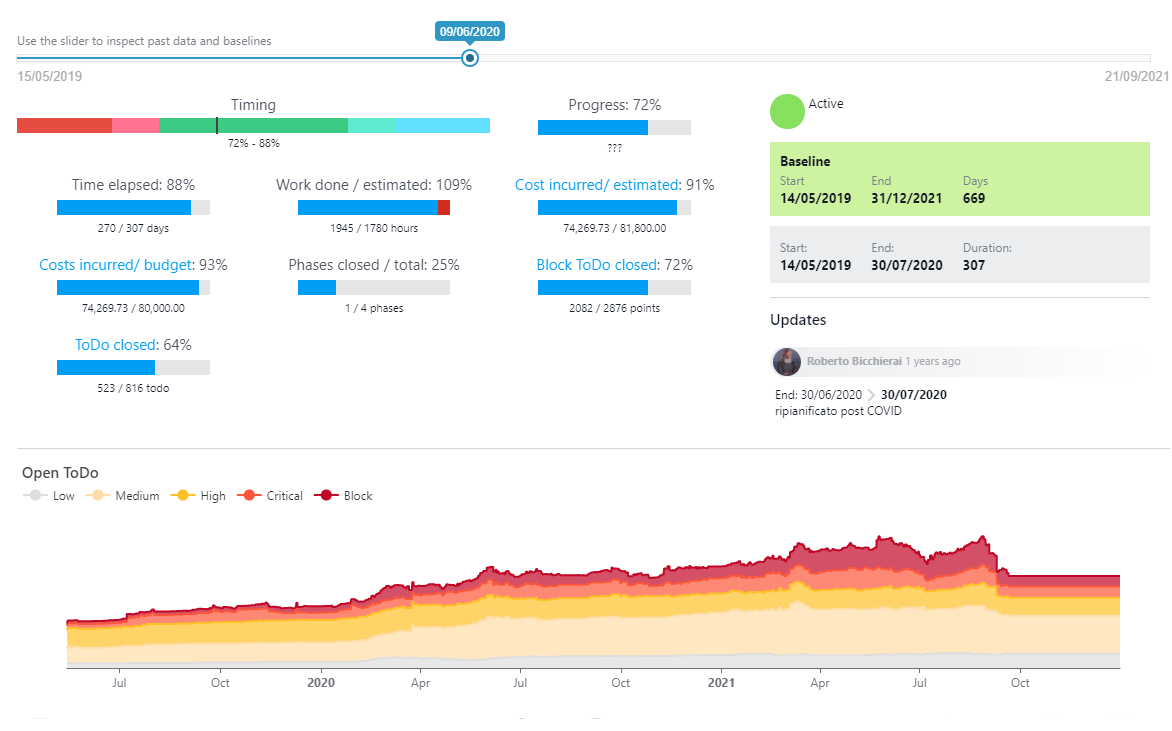How can you transform a vision into reality while preventing challenges and problems? By having a sound action plan.
CONTENT
Yeah, a sound plan is a nice catch phrase, but what is it really? What is it for and how can you implement it?
Let’s see it in this article and start from the very beginning.
What is an action plan?
An action plan is a checklist for any steps or activities you need to accomplish to achieve the goals you set.
It is an integral part of the strategic planning process and helps improve teamwork planning.
Action plans are not solely useful in project management, but can also be used by people to draw up a strategy to achieve their personal goals.
An action plan comprises:
- A clearly defined description of the objective to be achieved
- Tasks/steps that must be performed to achieve the goal
- People who will be assigned to perform each task
- When will these activities (deadlines and milestones) be completed?
- Resources needed to complete activities
- Measures to evaluate progress
The most useful thing about having a comprehensive list in one location is that it makes it easier to track progress and plan things effectively.
However, an action plan is not something carved in stone. As your organization grows and conditions change, you will need to review and tweak it to meet your newest needs.
Why you need an action plan?
Sometimes companies don’t invest much time in developing an action plan before an initiative, which, in most cases, leads to failure.
Planning does, in fact, help you prepare for the possible obstacles and unforeseen events that will be found along the way. By having an effective plan, you can increase productivity and stay focused on the goal even when negative events occur.
Here are some benefits of an action plan:
- Provide clear direction: an action plan highlights exactly what steps need to be undertaken and when they should be completed.
- Motivation: having goals written and phased will give a reason to stay motivated and engaged throughout the project.
- Analysis and monitoring: with an action plan, you can monitor progress toward your goal.
- Priority organization: given that an action plan lists all the steps to complete, this will help to prioritize activities according to effort and impact.
The business plan guides the company in its development and should therefore always remain available and visible to those involved. For example, inserting it in a project management software like Twproject can help you stay focused without losing sight of the objectives.

Keep track of your action plan
In Twproject you will find everything you need, from project drafting, planning up to the analysis of the results.
Enter your plan in Twproject now!How to develop an action plan
Apparently, creating an action plan looks easy enough but there are several important steps that you need to carefully tackle to get the best out of it.
Here’s how to write an plan in 6 steps.
1) Define your end goal: If you don’t have a clear idea of what you want to do and achieve, failure will be unavoidable. So, the first step is to write down a definite end goal, ideally defining it according to the SMART criteria.
2) List the steps to follow: now your goal is clear, but what exactly should you do to achieve it? This is where you create an initial rough list of all the tasks that need to be covered, the due dates and the people accountable. It is important that the entire team is involved in this step so that everyone is informed of their roles and responsibilities in the project. If some tasks are too large and complex, they can be split into smaller tasks that are easier to perform and manage.
3) Prioritize tasks and add deadlines: it’s time to rearrange your list by prioritizing tasks so that some assignments won’t block other processes. It is also time to add deadlines, making sure they are achievable. Sometimes in these cases it may be beneficial to speak directly with the person responsible for performing the task to understand their true capabilities before deciding on a deadline.
4) Set milestones: milestones can be regarded as mini-goals that lead to your main goal. The benefit of adding milestones is that they give team members a sense of expectation and help them stay motivated.
5) Identify required resources: before project start-up, it is essential to ensure that you have all the resources necessary to complete your tasks and if they are not currently available, make a plan to acquire them including a budget.
6) Visualize the action plan: the purpose of this step is to create something that everyone can understand at a glance and that can be shared with everyone. Regardless of whether the plan takes the form of a flowchart, a Gantt diagram or a chart, the most important thing is that it clearly communicates the action elements identified so far: activities, task leaders, milestones, resources, etc. Also, the action plan is a dynamic document that should be easily accessible to everyone.
7) Monitor, measure and update: here you will assess your progress on a regular basis. You can tick off completed tasks, bringing attention to how you progressed toward the project’s goal. This will also highlight outstanding or delayed activities, in which case you need to understand why and find appropriate solutions. Then, the plan will be updated accordingly.

How to optimise the use of an action plan
Project management software such as Twproject is the solution for those looking for a support tool in the plan phases. It offers, in fact, numerous functionalities that allow each phase of the plan to be optimised:
- drafting of activities;
- setting milestones;
- monitoring budgets;
- analysing statistics.
Moreover, the action plan is a dynamic document that should be easily accessible to all: using a single, shared platform is a major advantage in project management.
Twproject is designed to make decision-making and operations easy for managers and teams: a unique tool that enables effective plan and monitoring of results.
Would you like to test it now? Click here to start your free trial now.




